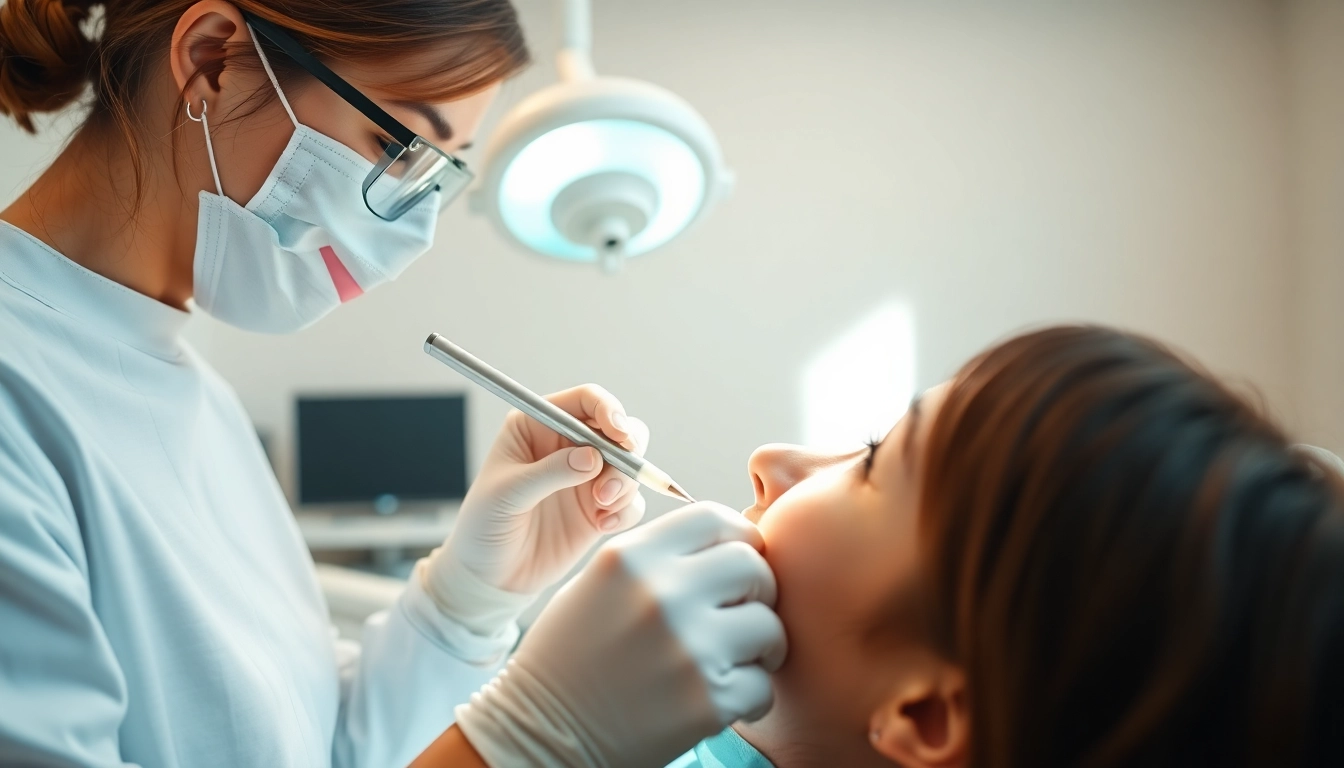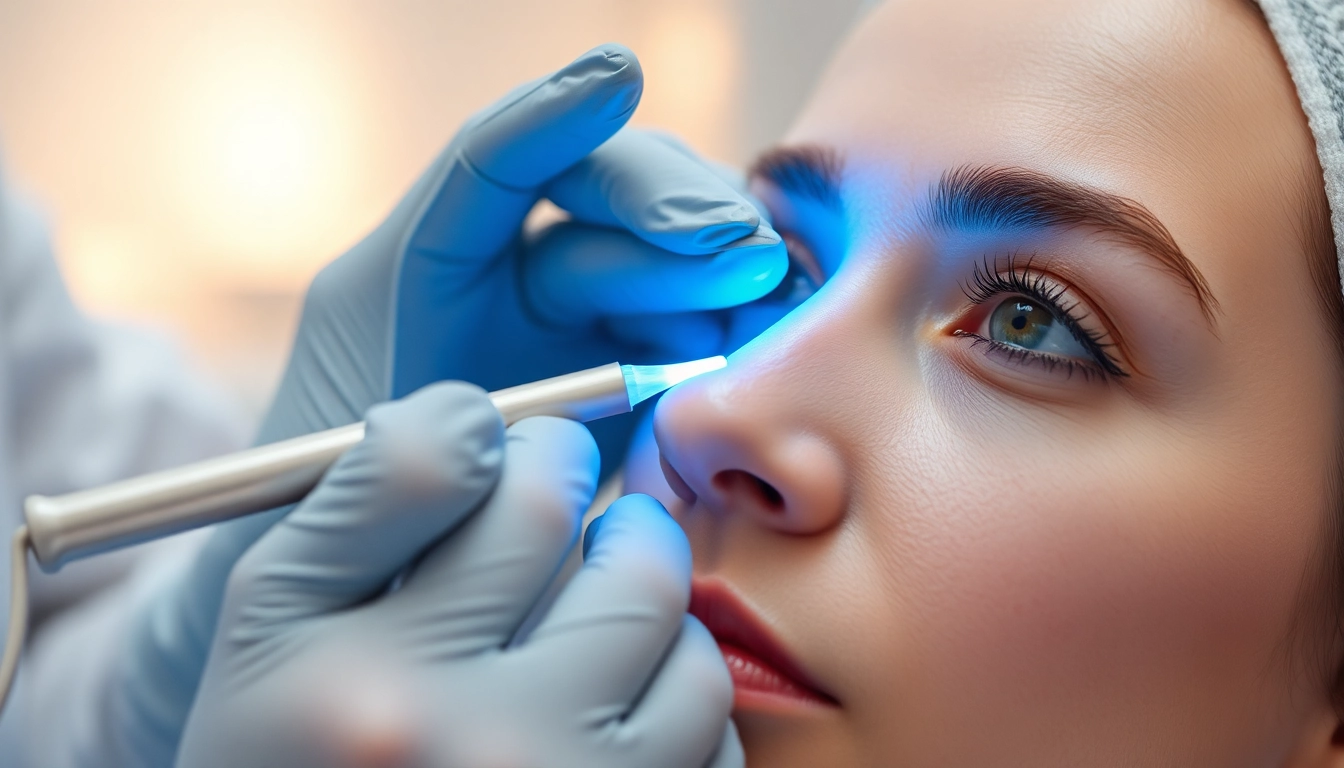Understanding Dental Cleanings
What Are Dental Cleanings?
Dental cleanings are professional dental procedures designed to maintain oral health by removing plaque, tartar, and bacteria from the teeth and gums. Typically performed by dental hygienists or dentists, these cleanings are essential for preventing dental diseases such as cavities and gum disease. The process involves a thorough examination of the mouth, followed by scaling (manual removal of plaque and tartar), polishing, and sometimes, fluoride treatment. For more detailed information about dental cleanings, you can refer to dental cleanings offered at local dental clinics which emphasize preventive care.
Importance of Regular Dental Cleanings
Regular dental cleanings play a crucial role in maintaining optimal oral health. These cleanings help:
- Prevent tooth decay by removing plaque and tartar, which contribute to cavity formation.
- Keep gums healthy and reduce the risk of gum disease, which can lead to tooth loss if not treated.
- Identify issues early, allowing for prompt treatment before they worsen.
- Provide a fresh feeling and remove surface stains, promoting an aesthetically pleasing smile.
- Educate patients about proper oral hygiene practices and nutritional advice to support dental health.
Who Performs Dental Cleanings?
Dental cleanings are carried out by qualified dental professionals. Dental hygienists, who undergo specialized training in oral health, primarily perform cleanings. They are equipped with the skills to provide preventive care and education to patients. In some cases, a dentist may assist or take over, especially if complex issues are identified during the cleaning process. Both professionals work collaboratively to ensure that patients receive comprehensive care.
Types of Dental Cleanings
Preventive Dental Cleanings
Preventive dental cleanings, often referred to as prophylactic cleanings, are typically conducted every six months. These cleanings focus on maintaining oral health through:
- The removal of plaque and tartar from both above and below the gumline, which helps to prevent gum disease.
- Polishing of teeth to remove surface stains and smooth the enamel surface, making it more difficult for plaque to adhere.
- Fluoride treatments, which can strengthen enamel and reduce the risk of cavities.
Deep Dental Cleanings
Deep dental cleanings, also known as scaling and root planing, are necessary when gum disease is present. These cleanings are more intensive and may require multiple visits. They focus on:
- Thorough removal of tartar and plaque from the roots of the teeth.
- Smoothing of the tooth roots to help gums reattach to the teeth.
- Potential use of local anesthesia to minimize discomfort during the procedure.
- Customized gum health plans tailored to the patient’s needs to maintain good oral health.
Specialized Dental Cleanings for Certain Conditions
Some patients may require specialized dental cleanings due to specific health conditions or risks. These may include:
- Patients with diabetes are more susceptible to gum disease and may need more frequent cleanings.
- Individuals undergoing orthodontic treatment or wearing braces might require special cleaning techniques to maintain oral hygiene.
- Patients with chronic respiratory diseases or heart conditions may also need modified cleaning approaches to ensure optimal care and minimize exacerbation of their conditions.
The Dental Cleaning Process Explained
Initial Examination and Assessment
The dental cleaning process begins with an initial examination. The dental professional will assess the overall health of your teeth and gums, checking for any signs of decay, gum disease, or other concerns. This may include:
- Visual examination of teeth and gums.
- X-rays to identify hidden problems such as cavities between teeth or issues below the gumline.
Tools and Techniques Used
Dental cleanings utilize a variety of specialized tools to ensure a thorough cleaning process:
- Scaler: A hand-held tool used to remove tartar and plaque both above and below the gumline.
- Ultrasonic cleaner: A device that uses vibrations and water to dislodge plaque and tartar.
- Polishing tools: Electric handpieces and polishing cups are used to smooth the teeth after scaling, often accompanied by gritty toothpaste.
- Floss and interdental brushes: To clean between teeth and remove any remaining debris.
Post-Cleaning Care Recommendations
After the cleaning, the dental professional will provide care recommendations to maintain oral hygiene:
- Practicing proper brushing and flossing techniques at home.
- Using fluoride toothpaste or mouthwash.
- Scheduling follow-up visits based on individual needs (typically every six months for preventive cleanings).
- Addressing any dietary habits that could impact dental health.
Benefits of Regular Dental Cleanings
Health Benefits for Teeth and Gums
Regular dental cleanings provide essential health benefits, including:
- Reduction of inflammatory gum disease, protecting against tooth loss.
- Lowered risk of systemic diseases linked to oral health, such as cardiovascular disease and diabetes.
- Improved breath and overall oral hygiene.
Cost-Effectiveness of Preventive Care
Investing in regular dental cleanings is often more cost-effective than dealing with extensive dental issues later. Preventive care can:
- Help avoid the need for expensive restorative procedures like fillings, crowns, or root canals.
- Minimize potential loss of teeth, which could lead to costly tooth replacement options like implants or dentures.
- Provide fewer instances of emergency dental visits, which tend to have higher costs.
Enhancing Your Overall Health
There’s a strong connection between oral health and overall health. Regular dental cleanings contribute to:
- Preventing the spread of bacteria that can lead to systemic infections.
- Reducing inflammation throughout the body.
- Improving self-esteem through enhanced oral aesthetics, which can positively impact mental health.
Common Concerns About Dental Cleanings
Why Do Dental Cleanings Sometimes Hurt?
It is not uncommon for patients to experience some discomfort during or after dental cleanings. Factors contributing to this may include:
- Presence of gum disease, which makes gums sensitive.
- Presence of extensive tartar buildup that requires more forceful scaling.
- Individual pain tolerance levels and anxiety related to dental visits.
Communicating any discomfort to the dental professional can help them take additional measures to ensure a comfortable experience.
Addressing Myths About Dental Cleanings
Several myths surrounding dental cleanings can lead to misunderstandings. Some of these myths include:
- Myth: Dental cleanings are only for cosmetic purposes. Fact: Regular cleanings are crucial for preventing serious dental issues.
- Myth: Cleanings are painful and unnecessary. Fact: While some discomfort may occur, effective techniques and anesthetics can minimize pain.
- Myth: You only need a cleaning if you have problems. Fact: Preventive care is essential, even for those without visible issues.
When to Schedule Your Next Dental Cleaning
Most adults are advised to schedule dental cleanings every six months. However, the ideal frequency can vary based on individual risk factors—including previous dental issues, gum health, and personal habits. Those with specific health concerns may need to schedule cleanings more frequently. Always consult your dental provider for personalized recommendations.



